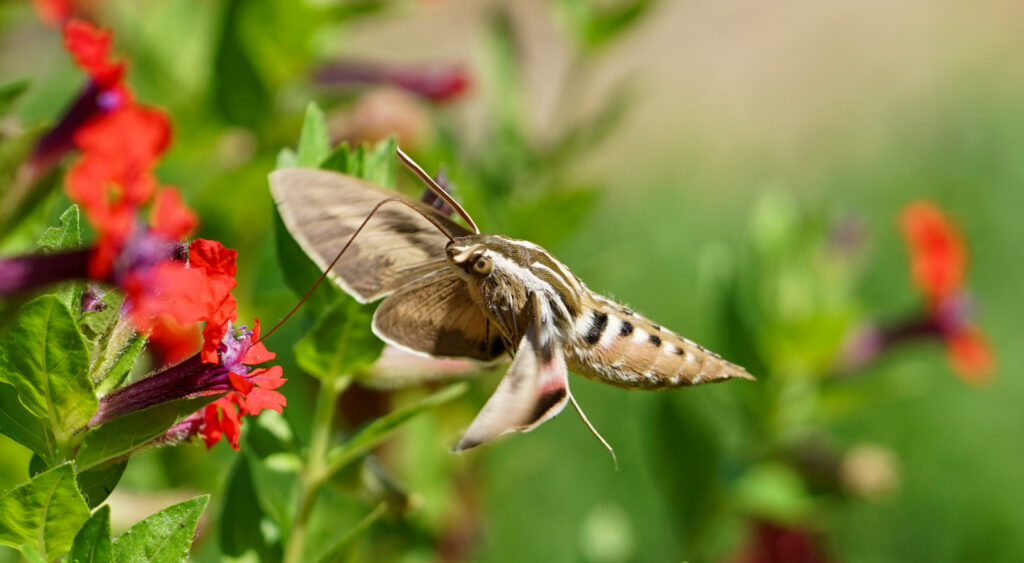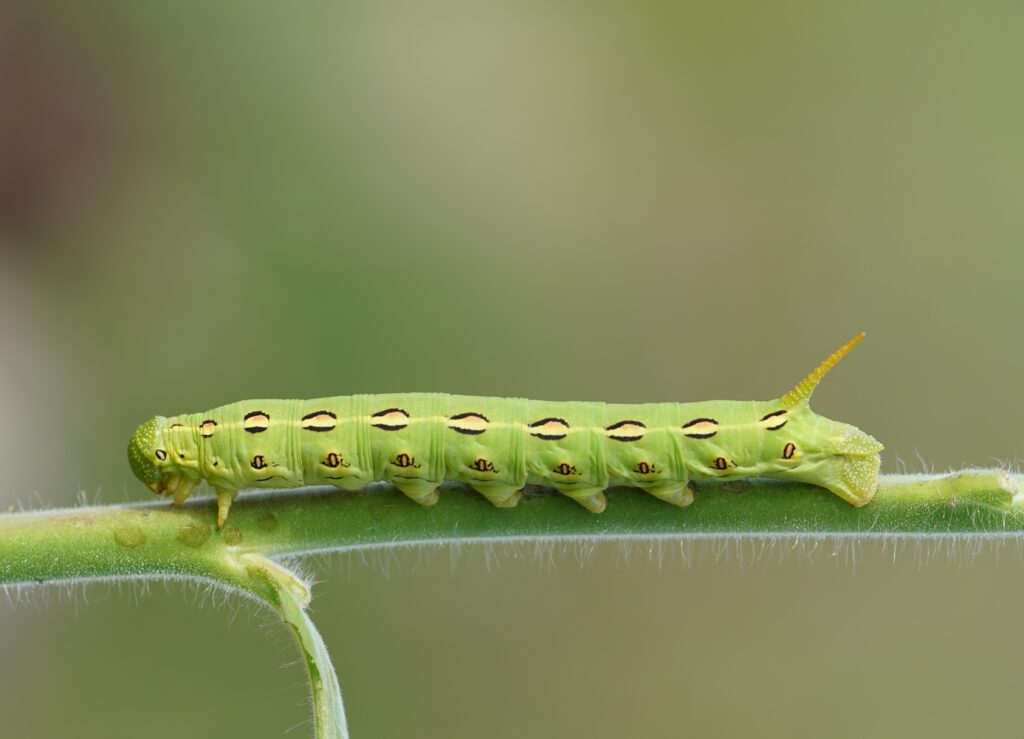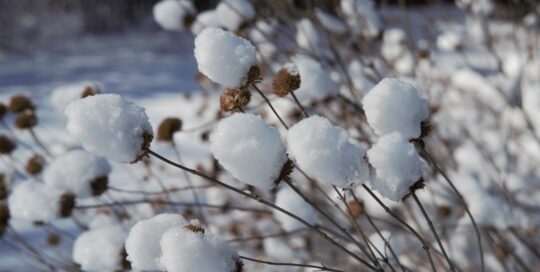Sphinx Moths
Views: 2315

The first Lepidoptera I saw this spring were not butterflies. Instead, it was white-lined sphinx moths. I was delighted to see them buzzing about my henbit, because I am utterly entranced by these amazing insects.
Sometimes mistaken for hummingbirds because their wings beat so fast, sphinx moths are often noticed pollinating flowers during the day. Also known as hawk moths or hummingbird moths, they belong to the Sphingidae family. There are over a thousand species of sphinx moths worldwide, with over a hundred in North America.
About Sphinx Moths
Sphinx moths are able to hover and feed on flowers like hummingbirds. They have long proboscises, which they use to reach deep into flower tubes to feed on nectar. Many species are important pollinators, particularly for plants with long, tubular flowers that other insects can’t reach.

Look at that proboscis! This is a white-lined sphinx.
Sphinx moths vary in size, coloration, and wing shape, but they are typically large and plump with a wingspan of up to 6 inches (15 cm). Often, they have bold, intricate patterns.
Their caterpillars are also distinctive, with long, slender bodies and a horn-like projection at the end of their abdomen. They feed on a variety of plants, including many crops, and are considered pests in some situations. The dreaded tomato horn-worm will transform into a five-spotted hawkmoth after it finishes devouring your plants.

Although often mistaken for a tomato hornworm, this is a white-lined sphinx caterpillar.
These moths are often active at dusk and dawn, but I see some species at night when they are attracted to my porch or patio lights.
Common Sphinx Moths in North America
There are many species of sphinx moths native to North America. Here are a few examples and their host plants:
- Hyles lineata (White-Lined Sphinx) – Apple, evening primrose, four-o’clocks, grape, pentas, purslane, and tomato.
- Eumorpha achemon (Achemon Sphinx) – Grape, Virginia creeper, and other members of the grape family.
- Hemaris diffinis (Snowberry Clearwing) – Honeysuckle, snowberry, and other members of the honeysuckle family.
- Hemaris thysbe (Hummingbird Clearwing) – Honeysuckle, snowberry, and other members of the honeysuckle family.
- Manduca sexta (Carolina Sphinx) – Tomato, tobacco, and various nightshade plants.
- Sphinx drupiferarum (Wild Cherry Sphinx) – Wild cherry, apple, and other members of the rose family.
- Sphinx kalmiae (Laurel Sphinx) – Mountain laurel, azalea, and other plants in the heath family.
- Xylophanes tersa (Tersa Sphinx) – Coffee, tobacco, and various nightshade plants.

Both a hummingbird clearwing (bottom) and snowberry clearwing (top).
Meet Leslie Miller
Leslie Ann Miller shares 3.5 acres in rural Oklahoma with birds, butterflies and wide variety of animals. She is currently transforming her yard with plantings…
Leslie's Recent Posts

Firescaping 101






